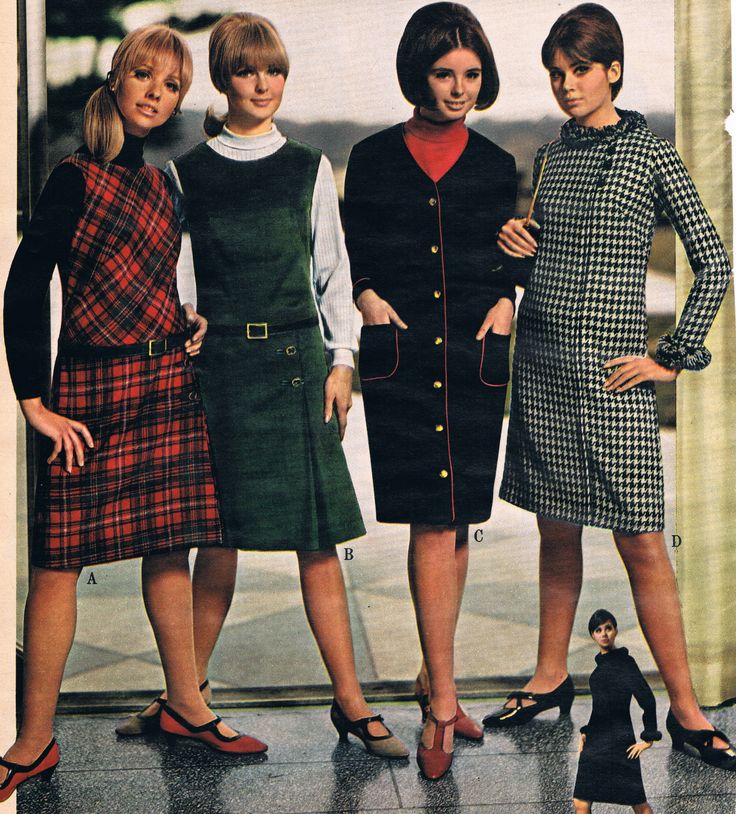Elegance and Empowerment: Navigating the Boardroom in 1960s Women’s Business Fashion

Introduction:
The 1960s marked a transformative period for women’s rights and societal expectations, and nowhere was this more evident than in the realm of fashion. The evolution of women’s business fashion during this era mirrored the changing roles and aspirations of women in the workforce. From the iconic tailored silhouettes to the emergence of the pantsuit, this article delves into the intricate details of 1960s women’s business fashion, exploring how style became a powerful tool for empowerment and expression in the professional sphere.
Chapter 1: Breaking Traditions – The Shift in Women’s Roles
1.1 Postwar Feminism and Professional Ambitions:
The aftermath of World War II set the stage for a growing feminist movement, and women increasingly sought opportunities in the professional world. This shift in societal expectations paved the way for a new approach to women’s business fashion, as women began to assert themselves in traditionally male-dominated workplaces.
1.2 From Homemaker to Career Woman:
The 1960s saw a departure from the stereotypical image of women as homemakers. With a surge in women entering the workforce, business fashion became a means of asserting independence and challenging traditional gender norms.
Chapter 2: The Silhouette of Success
2.1 Structured Elegance:
Women’s business fashion in the 1960s embraced a more structured and tailored silhouette. Shift dresses and pencil skirts became staples, emphasizing a clean and elegant aesthetic that conveyed professionalism and competence.
2.2 The Rise of the Sheath Dress:
The sheath dress, characterized by a fitted, straight-cut silhouette, became an emblematic piece of 1960s business fashion. This versatile garment offered a sophisticated and streamlined look that seamlessly transitioned from the office to evening events.
Chapter 3: Power Suits and Pantsuits
3.1 Evolution of the Power Suit:
The 1960s witnessed the evolution of the power suit, marking a departure from the more restrictive styles of the previous decade. Jackets featured broader shoulders, while skirts and trousers maintained a tailored and professional appearance, symbolizing a woman’s ability to command authority in the workplace.
3.2 Pioneering the Pantsuit:
The late 1960s saw the emergence of the pantsuit as a groundbreaking statement in women’s fashion. Designers like André Courrèges and Yves Saint Laurent challenged conventions by introducing pantsuits tailored for women, allowing them to navigate professional spaces with both style and comfort.
Chapter 4: Colorful Expression and Mod Influences
4.1 Color Palette and Patterns:
While professionalism remained paramount, the 1960s brought a shift towards more vibrant colors and bold patterns in women’s business fashion. Jewel tones, geometric prints, and color-blocking added a touch of personality to professional attire, reflecting the broader spirit of the era.
4.2 Influence of Mod Fashion:
The mod fashion movement, with its avant-garde and youth-oriented styles, influenced women’s business fashion. High collars, A-line silhouettes, and bold accessories were incorporated into office wear, allowing women to express their individuality within the confines of corporate attire.
Chapter 5: Accessories and Hair Styles
5.1 Chic Accessories:
Accessories played a crucial role in completing the polished look of 1960s business fashion. Pearl necklaces, stylish gloves, and structured handbags became essential elements, adding a touch of sophistication to office attire.
5.2 The Bouffant and the Beehive:
Hairstyles in the 1960s were characterized by voluminous dos like the bouffant and the beehive. Women embraced these chic and elegant hairdos, complementing their professional attire with hairstyles that exuded confidence and glamour.
Chapter 6: Influential Style Icons
6.1 Jacqueline Kennedy’s Timeless Elegance:
Jacqueline Kennedy, the epitome of grace and style, became a fashion icon in the 1960s. Her tailored suits, pillbox hats, and refined accessories set a standard for women’s business fashion, inspiring a generation of working women to embrace sophistication in the workplace.
6.2 Mary Quant’s Youthful Revolution:
British designer Mary Quant, a leading figure in the mod fashion movement, revolutionized women’s fashion with her bold and youthful designs. Her influence extended to business attire, injecting a sense of playfulness and innovation into professional wardrobes.
Chapter 7: Challenges and Triumphs
7.1 Dress Codes and Workplace Challenges:
Despite the strides in women’s fashion, many workplaces maintained strict dress codes that reinforced traditional gender roles. Women faced challenges in asserting their right to wear trousers or more contemporary styles, highlighting the ongoing struggle for equality in the professional realm.
7.2 Legacies of Empowerment:
The changes in women’s business fashion during the 1960s left a lasting legacy of empowerment. As women navigated boardrooms and executive offices, their fashion choices became a reflection of their determination to break barriers and redefine societal expectations.
Chapter 8: Contemporary Reverberations
8.1 Modern Interpretations:
The influence of 1960s women’s business fashion continues to resonate in contemporary styles. Designers draw inspiration from the clean lines, bold colors, and tailored silhouettes of the era, offering modern interpretations that pay homage to the groundbreaking styles of the Swinging Sixties.
8.2 Empowerment Through Fashion:
Today, women view fashion as a tool for empowerment and self-expression in the workplace. The legacy of 1960s business fashion lives on as women across the globe continue to challenge norms and assert their presence in professional spaces, using style as a means of conveying competence and confidence.
Chapter 9: Conclusion – A Stylish Revolution
In conclusion, 1960s women’s business fashion was not merely a reflection of changing hemlines; it was a stylish revolution that mirrored the profound societal shifts of the era. From the structured elegance of the sheath dress to the bold statement of the pantsuit, women navigated the boardroom with a sense of style that matched their newfound ambitions. The legacy of this transformative period in fashion endures, reminding us that the empowerment of women is not only written in history books but also woven into the very fabric of their professional attire. As we celebrate the elegance and empowerment of 1960s women’s business fashion, we acknowledge the resilience and determination that paved the way for contemporary women to express themselves confidently in the workplace, proving that style is not just a matter of aesthetics but a reflection of societal progress and individual strength.




